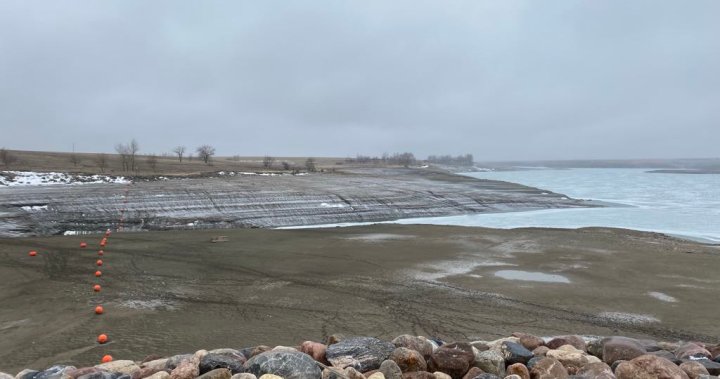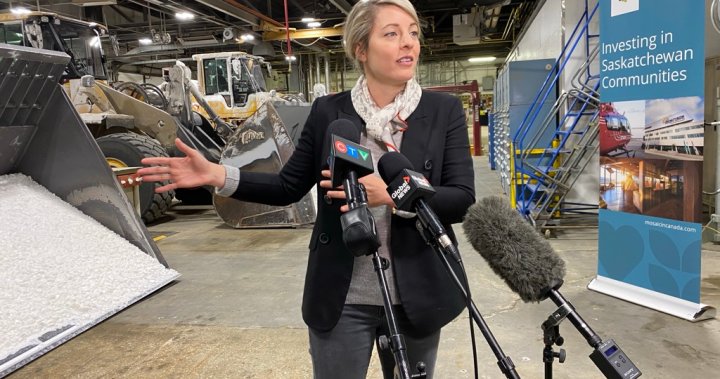While Alberta saw some normal precipitation for much of the prairie region in February, drought conditions remain generally unchanged for the province.
It has some irrigation districts in southern Alberta predicting below-average water allocation for the 2024 irrigation season.
Since December, the St. Mary River Irrigation District (SMRID), the largest irrigation district in North America, has been sending monthly updates to irrigators on what this year could look like.
On March 15, the SMRID shared a forecast with a preliminary water allocation of eight inches at the farm gate, however, that’s subject to change based on snowpack and reservoir levels as the season progresses.
“That’s a pretty severe restriction,” SMRID general manager, David Westwood, said. “On a regular year when we have a good water supply, we would normally be setting our allocation in the 15- to 16-inch range. So, to be down at eight inches is almost a 50 percent reduction.”
According to Westwood, a finalized number is set to be released at the annual general meeting on April 3 at the Agri-food Hub & Trade Centre.
“We also had heard recently that irrigators were trying to make some decisions about what kind of crops they wanted to plant, knowing full well that we had been warning for a long time that it looks like we could be heading into a water restriction or water supply,” said Westwood. “So, we thought it was important to at least give them that preliminary forecast so they can make some initial decisions.”
He went on, “There’s obviously concern, heading into a water restriction year but they [irrigators] saw how we ended last season, we had to shut down irrigation season two weeks earlier than normal.”
While some crops yield more water than others such as sugar beets or potatoes, Westwood says people may consider moving their water around this year due to the announcement.
Breaking news from Canada and around the world
sent to your email, as it happens.
Breaking news from Canada and around the world
sent to your email, as it happens.
“Us and other irrigation districts, allow the transfer of water from one parcel to another s they might take some of their water allocation from a lower use crop for example some sort of cereal type and then maybe put it towards a higher value, higher water use crop.”
Dr. Willemijn Appels, senior research chair with the Mueller Irrigation Research Group at the Lethbridge College, says this preliminary allocation will have many people looking at their crop mixes this year.
“Luckily most irrigation districts allow you to move your water around within your operation, so you could take some water from a crop that might suffer a little bit more or can take a bit of a hit like wheat, and move that onto your potatoes,” said Dr. Appels. “But yeah, with eight inches you’re probably not going to grow the same amount of potatoes and sugar beets that you would otherwise do.”
She went on to share that the current conditions are comparable to the most recent drought in 2001-2002.
“It was kind of similar, low snowpacks, low reservoir levels and a pretty bleak outlook but a sustained June rain made an end to that drought,” explained Dr. Appels. “So, I would say that’s usually how that goes. Somewhere there’s a large input of water weather that be in the mountains that replenishes the snowpack and therefore reservoirs or a series of large rain events in our wet season so May, June that effectively end the drought for this cycle.
“We might be going from an El Nino into a La Nina, but when or exactly how much water that will mean, that’s not quite clear.”
That has some farmers turning to purchasing crop insurance, something Jesse Cole with Agriculture Financial Services Corporation (AFSC) says has been a growing trend.
“We have seen some increases in participation after large droughts,” said Cole. “(Two years ago) there was an uptick. We went from roughly 79 per cent across the province up to about 82 per cent. This year in particular, with some of the spring soil moisture conditions and irrigators talking about some potential restrictions on irrigated water, I think it’s very important to take a look at it and to figure out how it fits in with your situation.”
The SMRID AGM will have a presentation on crop insurance and will share additional information regarding the Water Allocation Restriction Benefit Program.
While water allocation may be lower than years past, Westwood shared they’re still hoping for additional precipitation and are currently in the works to prepare for another dry summer.
“We’ve actually been meeting with the province, all the irrigation district have and the municipalities, along with some industrial and environmental groups to really look at planning for some water sharing this year,“ explained Westwood. “We’re in the process of drafting some water sharing agreements or commitments amongst ourselves to make sure that everybody has access to water, just probably not as much as they normally do.”
Westwood says an agreement could be in place by the end of April.
© 2024 Global News, a division of Corus Entertainment Inc.





